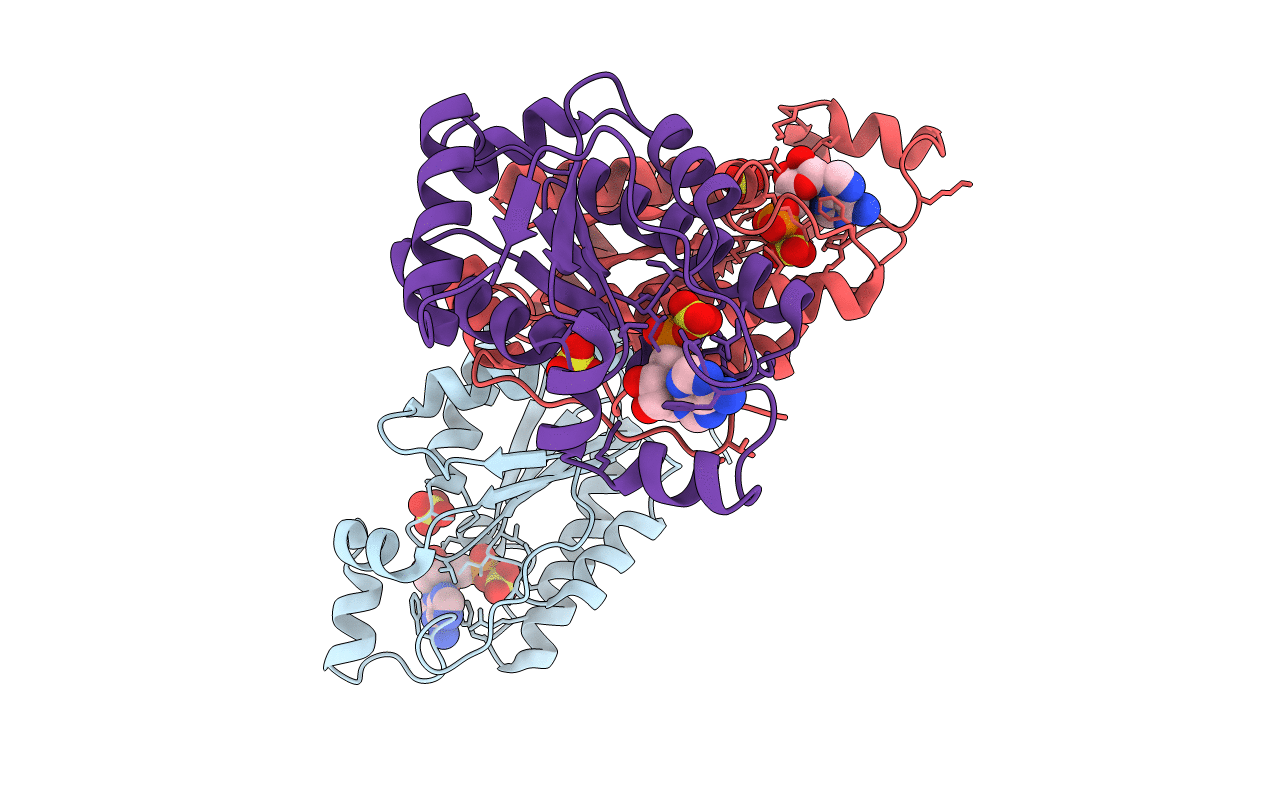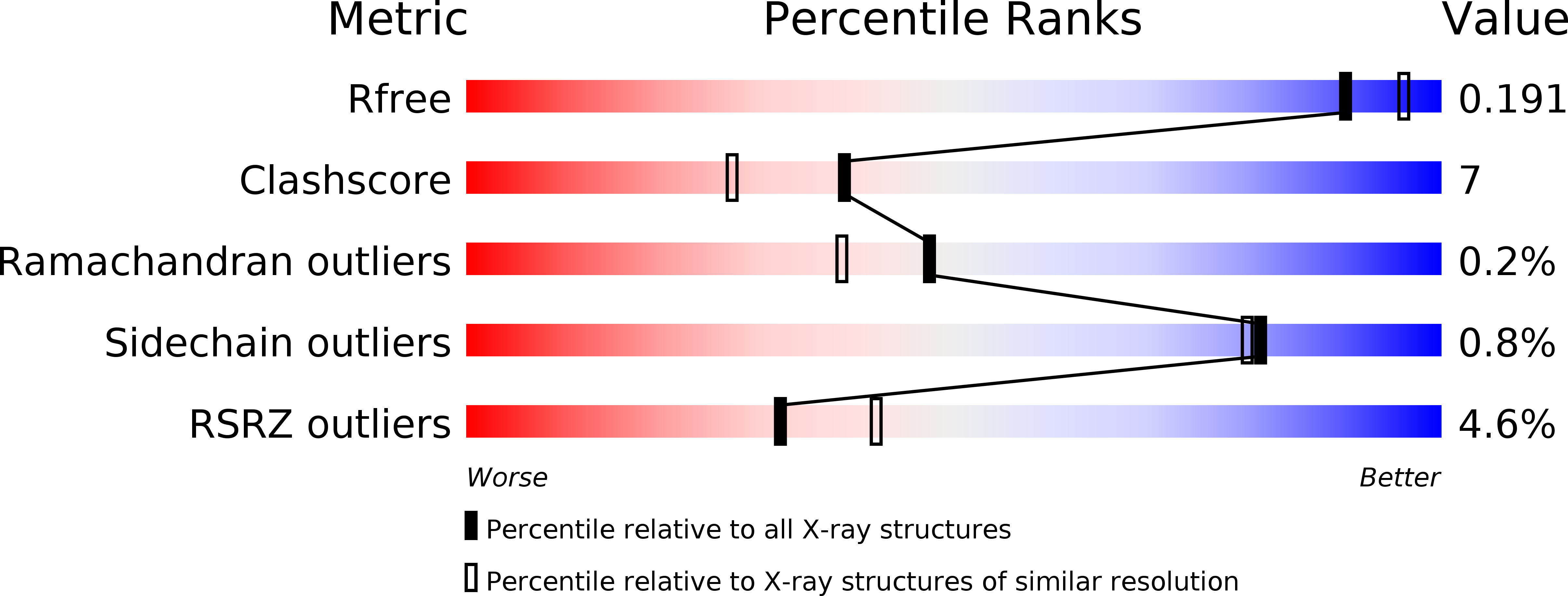
Deposition Date
2012-07-03
Release Date
2012-07-25
Last Version Date
2024-10-09
Entry Detail
PDB ID:
4FXP
Keywords:
Title:
Crystal structure of adenosine 5'-phosphosulfate kinase from Arabidopsis thaliana in Complex with Sulfate and APS
Biological Source:
Source Organism:
Arabidopsis thaliana (Taxon ID: 3702)
Host Organism:
Method Details:
Experimental Method:
Resolution:
1.95 Å
R-Value Free:
0.18
R-Value Work:
0.16
R-Value Observed:
0.16
Space Group:
C 1 2 1


